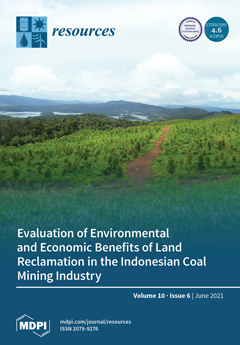While the successful reclamation of coal post-mining land sites in Indonesia has been evaluated, no cost-benefit analysis has been carried out on the reclamation of mined land, and the impact of the reclamation work has not been determined. The results of this case
[...] Read more.
While the successful reclamation of coal post-mining land sites in Indonesia has been evaluated, no cost-benefit analysis has been carried out on the reclamation of mined land, and the impact of the reclamation work has not been determined. The results of this case study indicate that reclamation work is not an emission-free process, but that the benefits delivered from this work are considerable. It was found that the emissions involved at the coal mined reclamation in Indonesia were 25.4–26.6 t-CO
2/ha, with topsoil management and land preparation contributing over 98% of the total emissions (9.5 t-CO
2/ha and 16 t-CO
2/ha, respectively). The ability of the trees on the reclaimed land to absorb CO
2 emissions was calculated to be 26.4 t-CO
2/ha, with the amount of oxygen produced calculated to be as much as 143 t-O
2/ha of oxygen. The economic value of the ecosystem services delivered by reclamation was over USD 27,750/ha. This is higher than the USD 8642–9417/ha cost of establishing the reclamation work. Improvements to reclamation work could be designed mining and reclamation plans with attention paid to reducing fuel consumption, and therefore, reducing CO
2 emissions. Furthermore, law enforcement and transparency, human resource development, and community participation are strongly required.
Full article





